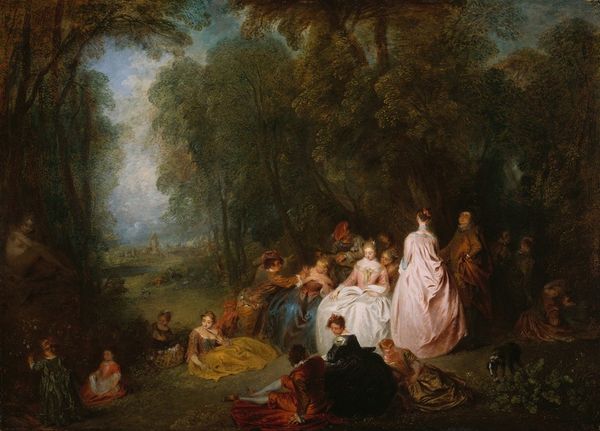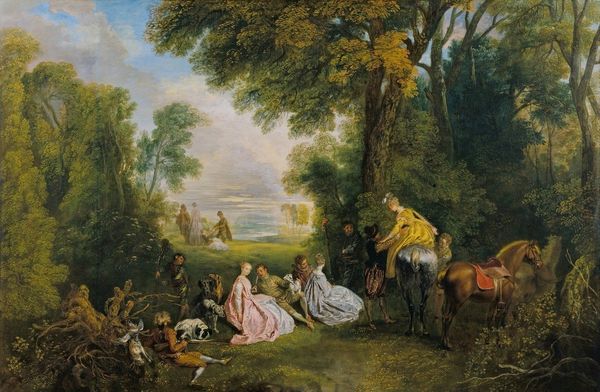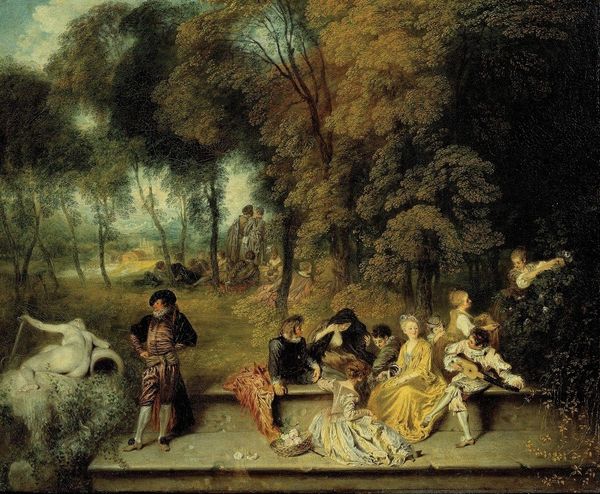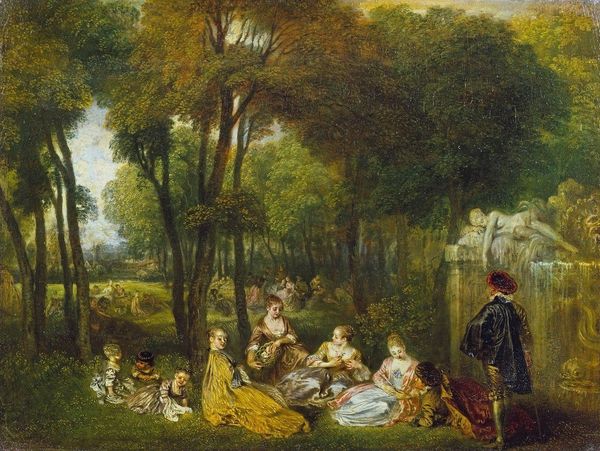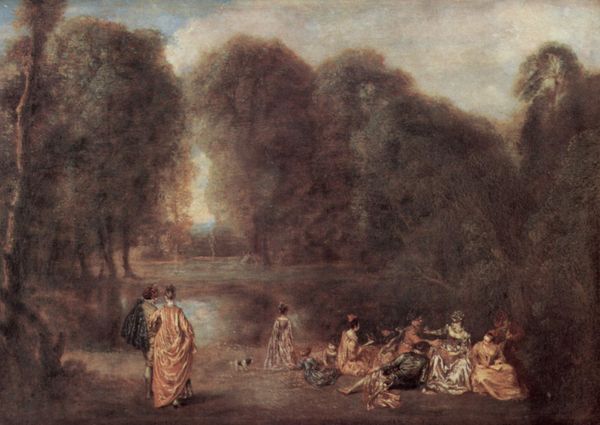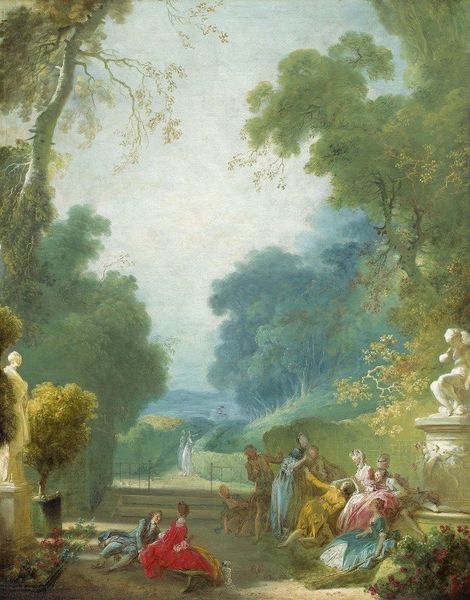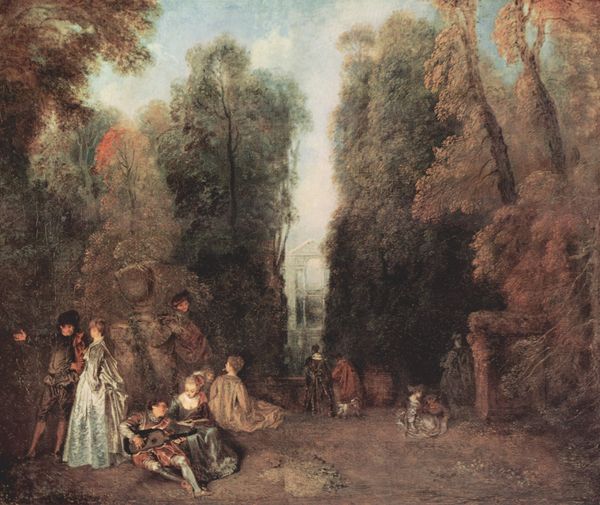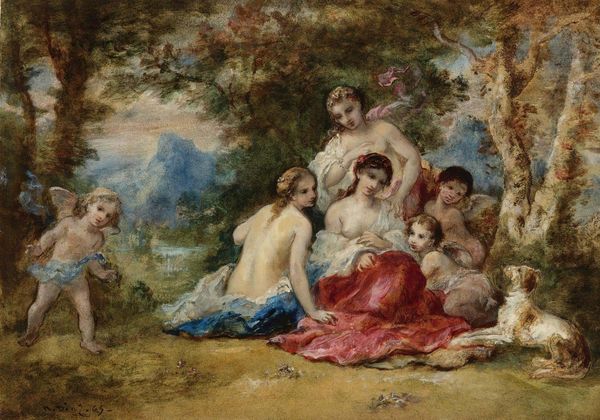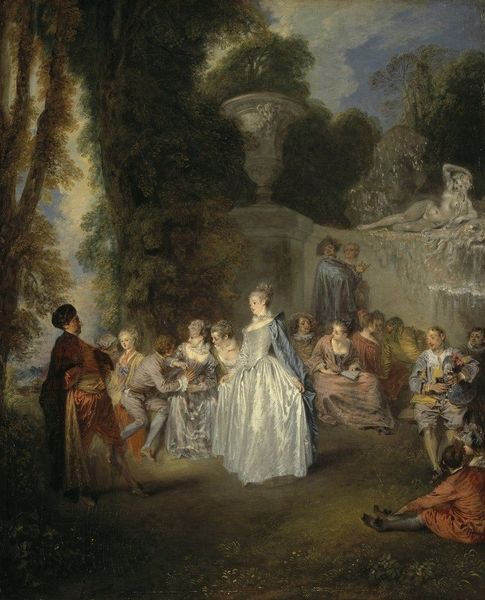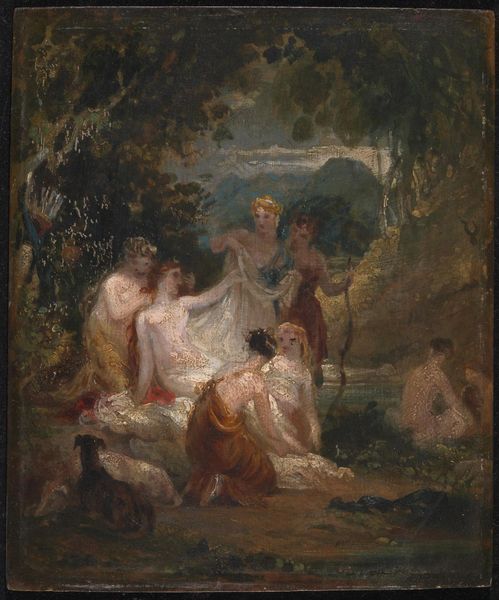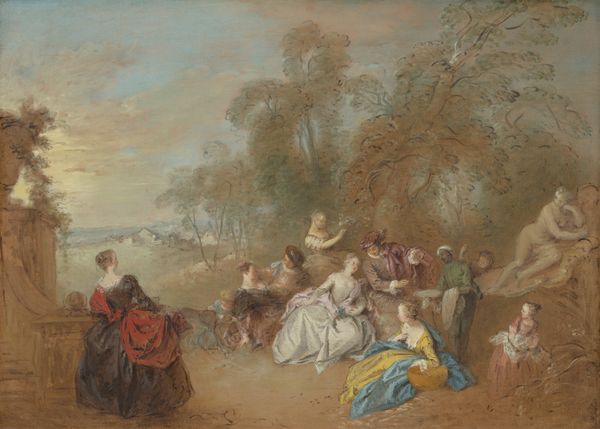
Copyright: Public Domain: Artvee
Jean-Antoine Watteau painted this oil on canvas, 'The Feast of Love', sometime in the early 18th century, presenting a verdant scene presided over by the cool marble of Venus. The statue of Venus and Cupid is a key motif here, embodying idealized love and beauty. This representation is rooted in classical antiquity, echoing the Hellenistic Aphrodite. Now, consider how the visual language of love has evolved. In Botticelli's 'Birth of Venus', we see a similar reverence, yet Watteau places Venus within a more intimate, earthly revelry. The subtle sensuality and idyllic setting evoke a dreamlike state. This can be seen as a collective yearning for Arcadia, tapping into humanity's subconscious desire for harmony and pleasure. Ultimately, the 'Feast of Love' speaks to a universal pursuit. Venus persists, guiding us through the ever-changing manifestations of love. Her presence in art is a cyclical journey, reemerging to shape our understanding of beauty and desire.
Comments
No comments
Be the first to comment and join the conversation on the ultimate creative platform.
